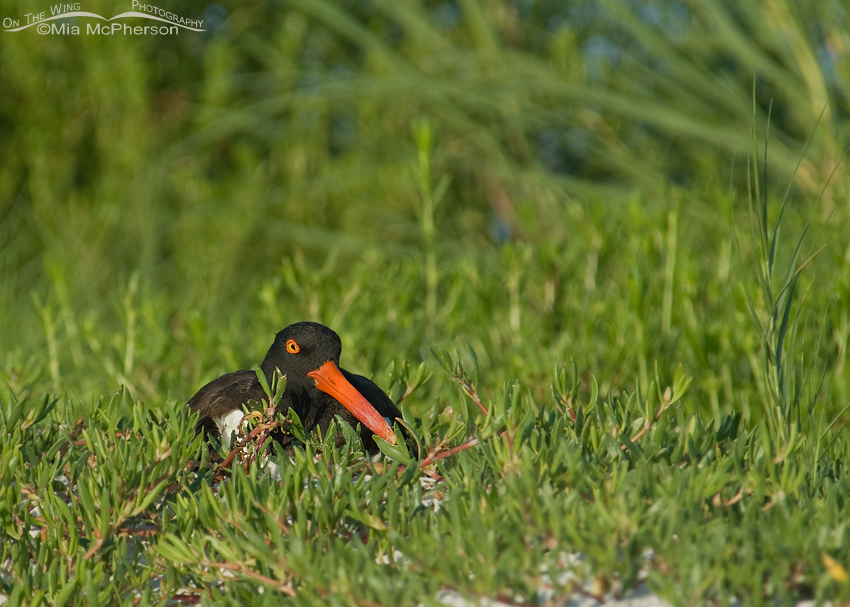 An American Oystercatcher on its nest – The images on this page were taken with a Nikon D200, apertures of f6.3 & f7.1, ISO 200, shutter speeds that varied between 1/500 and 1/800, Nikon 80-400mm VR at 400mm.
An American Oystercatcher on its nest – The images on this page were taken with a Nikon D200, apertures of f6.3 & f7.1, ISO 200, shutter speeds that varied between 1/500 and 1/800, Nikon 80-400mm VR at 400mm.
I watched this pair of American Oystercatchers for about half an hour and was able to observe and photograph them taking turns sitting on the nest in the Sea Purslane. American Oystercatchers are colorful, with an orange eye ring, bright yellow eyes, thick pinkish legs and a long orange bill that they use to pry open bivalve mollusks. They have white underparts and are dark brown over the wings and tail while the head is mostly black.
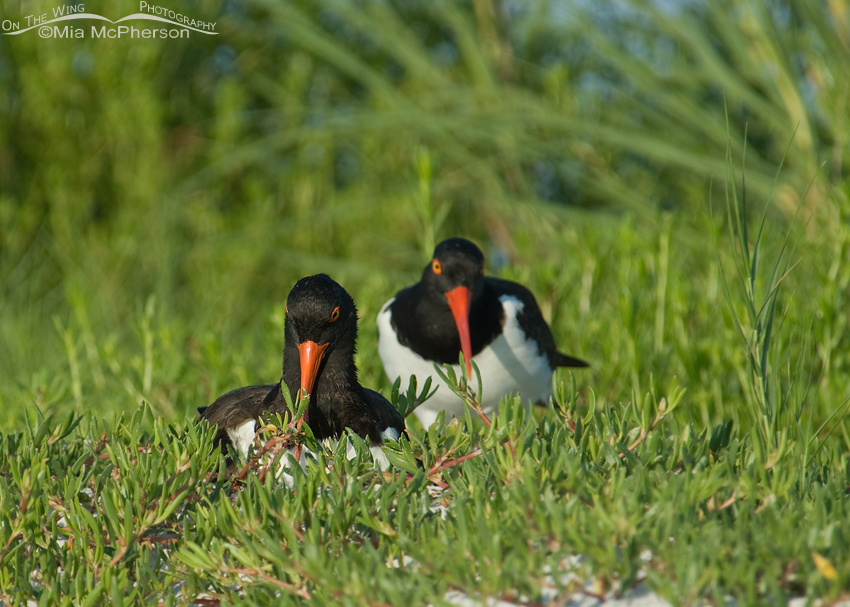 American Oystercatchers at their nesting site
American Oystercatchers at their nesting site
Nesting American Oystercatchers create simple scrapes on coastal beaches, dunes and salt marshes to lay their eggs in. They usually lay between 2-3 eggs around April to May. There are times when the first brood fails and they do re-nest. American Oystercatchers are exclusive to saltwater coastal habitats. This pair created their nest on a small purslane and sea oat covered dune.
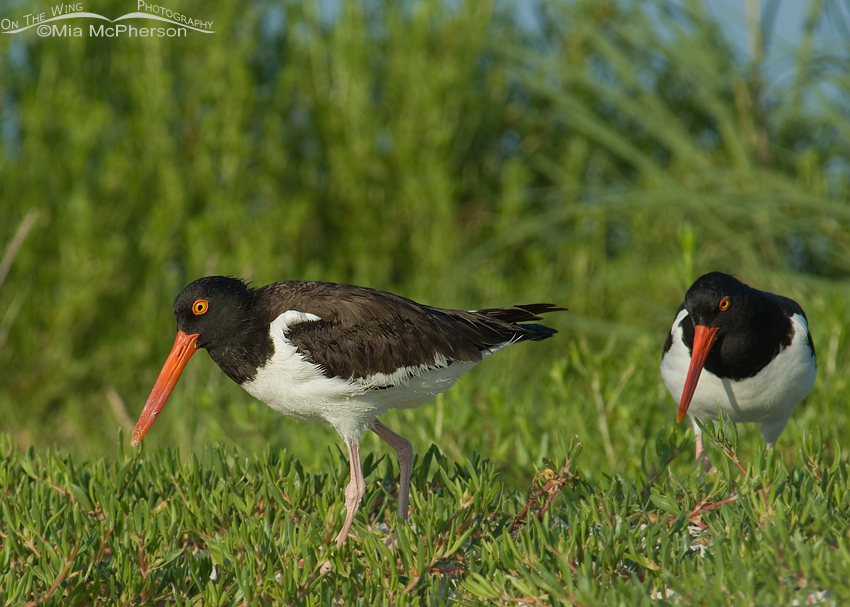 One Oystercatcher leaving the nest
One Oystercatcher leaving the nest
While one adult sits on the eggs the other goes off to feed. I noticed that the time interval between switching was between half an hour to forty-five minutes.
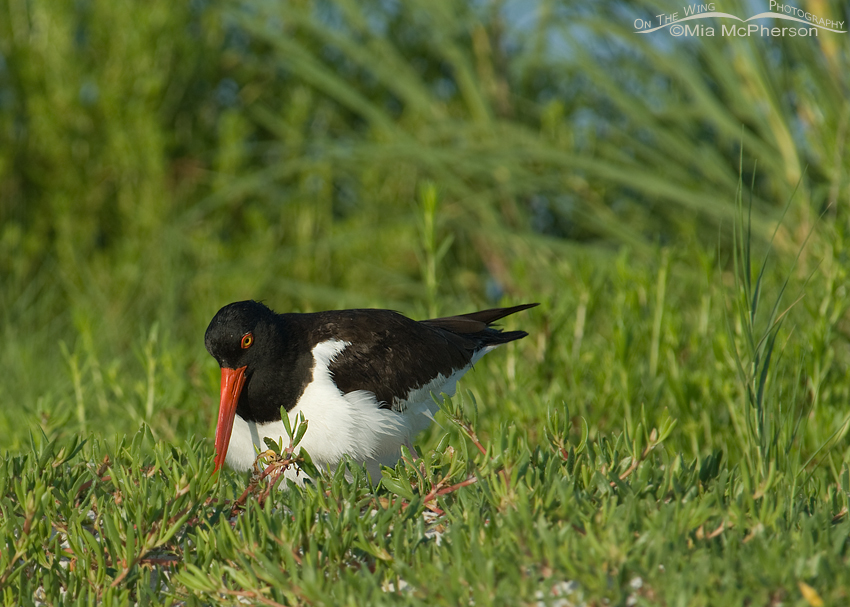 American Oystercatcher settling on eggs
American Oystercatcher settling on eggs
This pair of Oystercatchers first nest failed because a raccoon invaded it and ate the eggs. I have also witnessed Great Blue Herons attempting to steal the eggs.
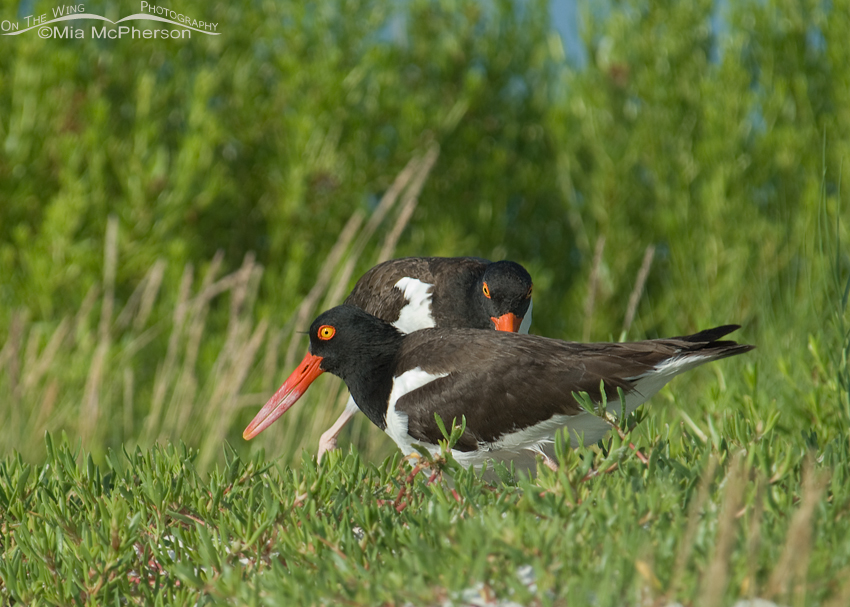 American Oystercatchers changing brooding duties
American Oystercatchers changing brooding duties
Photographing nesting American Oystercatchers can be challenging with the high contrast of whites, darks and oranges. Photographing them in early morning or late afternoon light helps or photographing on a day when the clouds diffuse the light.
Mia
Ethics on photographing nesting birds:
- Do not approach too closely
- If the birds show any sign of distress, back away
- Don’t trim leaves, twigs or branches to get a clearer shot, you may inadvertently attract predators or cause the eggs/chicks to over heat
- Follow local, state and federal guidelines concerning nesting birds
- Don’t harass the birds to get an action shot

